 by our College Data Analytics Team
by our College Data Analytics TeamNebraska Methodist College total enrollment is approximately 1,212 students. 496 are undergraduates and 358 are graduate students.
Male/Female Breakdown of Undergraduates
The full-time Nebraska Methodist College undergraduate population is made up of 91% women, and 9% men.
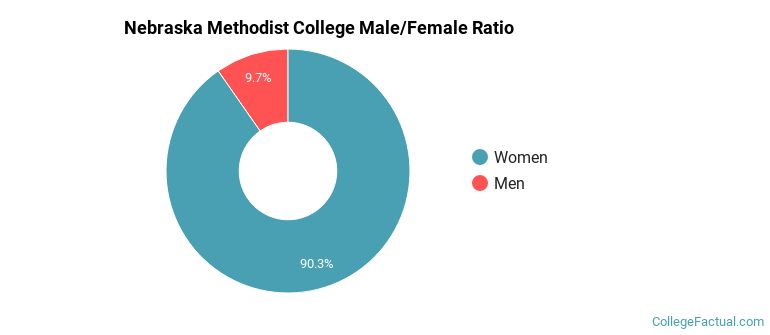
For the gender breakdown for all students, go here.
Nebraska Methodist College Racial/Ethnic Breakdown of Undergraduates
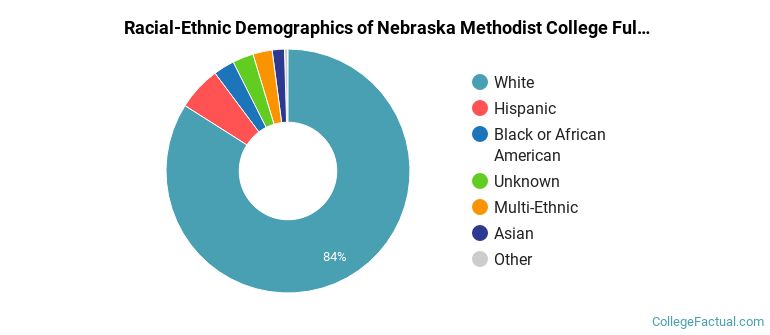
| Race/Ethnicity | Number |
|---|---|
| White | 418 |
| Hispanic | 30 |
| Black or African American | 13 |
| Asian | 12 |
| Multi-Ethnic | 10 |
| Unknown | 7 |
| International | 3 |
| Native Hawaiian or Pacific Islander | 2 |
See racial/ethnic breakdown for all students.
Male/Female Breakdown of Graduate Students
About 88% of full-time grad students are women, and 12% men.
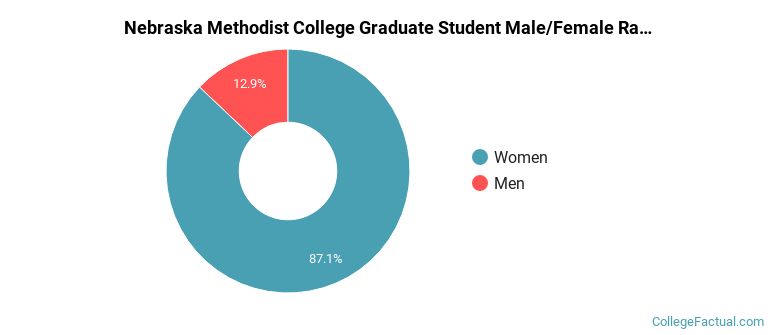
For the gender breakdown for all students, go here.
Nebraska Methodist College Racial-Ethnic Breakdown of Graduate Students
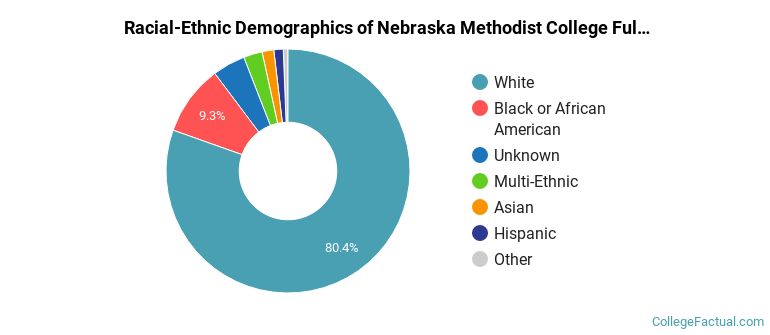
| Race/Ethnicity | Number |
|---|---|
| White | 291 |
| Black or African American | 25 |
| Unknown | 14 |
| Hispanic | 9 |
| Multi-Ethnic | 7 |
| Asian | 6 |
| Native Hawaiian or Pacific Islander | 2 |
| International | 0 |
See racial/ethnic breakdown for all students.
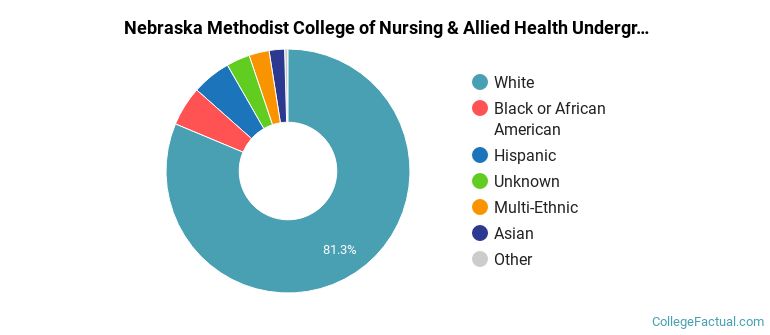
| Race/Ethnicity | Number |
|---|---|
| White | 980 |
| Hispanic | 68 |
| Black or African American | 61 |
| Unknown | 31 |
| Asian | 29 |
| Multi-Ethnic | 29 |
| Native Hawaiian or Pacific Islander | 4 |
| International | 4 |
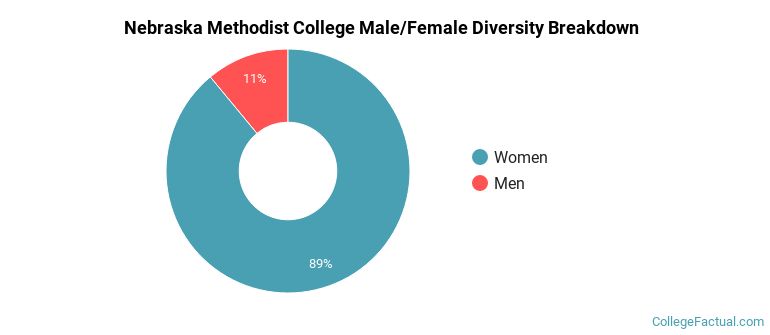
There are approximately 1,088 female students and 124 male students at Nebraska Methodist College.
Nebraska Methodist College ranks 1,717 out of 2,183 when it comes to geographic diversity.
11.36% of Nebraska Methodist College students come from out of state, and 0% come from out of the country.
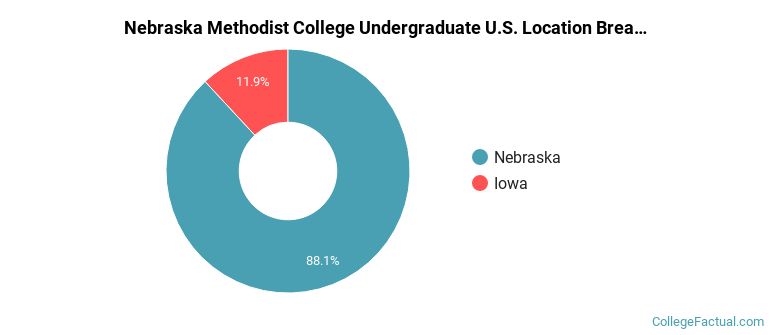
The undergraduate student body is split among 2 states (may include Washington D.C.). Click on the map for more detail.
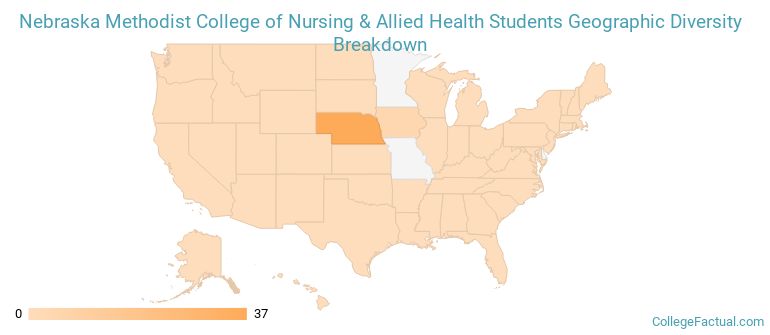
| State | Amount |
|---|---|
| Nebraska | 37 |
| Iowa | 5 |
| Alaska | 0 |
| Alabama | 0 |
| Arkansas | 0 |
Students from 3 countries are represented at this school, with the majority of the international students coming from Côte d’Ivoire, Mexico, and Georgia.
Learn more about international students at Nebraska Methodist College.
A traditional college student is defined as being between the ages of 18-21. At Nebraska Methodist College, 19.71% of students fall into that category, compared to the national average of 60%.
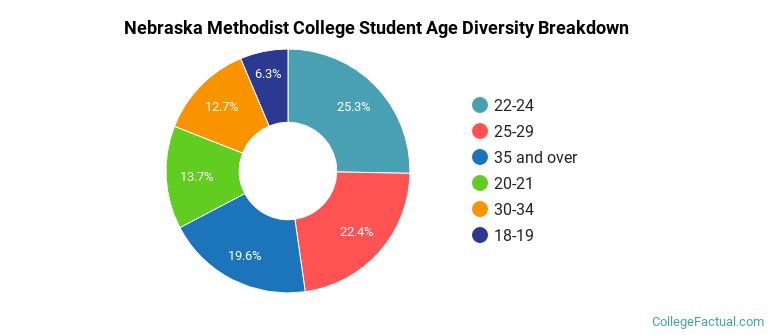
| Student Age Group | Amount |
|---|---|
| 22-24 | 291 |
| 25-29 | 258 |
| 35 and over | 225 |
| 20-21 | 157 |
| 30-34 | 146 |
| 18-19 | 73 |
| Under 18 | 0 |
Footnotes
*The racial-ethnic minorities count is calculated by taking the total number of students and subtracting white students, international students, and students whose race/ethnicity was unknown. This number is then divided by the total number of students at the school to obtain the racial-ethnic minorities percentage.
References
Department of Homeland Security Citizenship and Immigration Services
Read College Factual's Diversity Ranking Methodology.